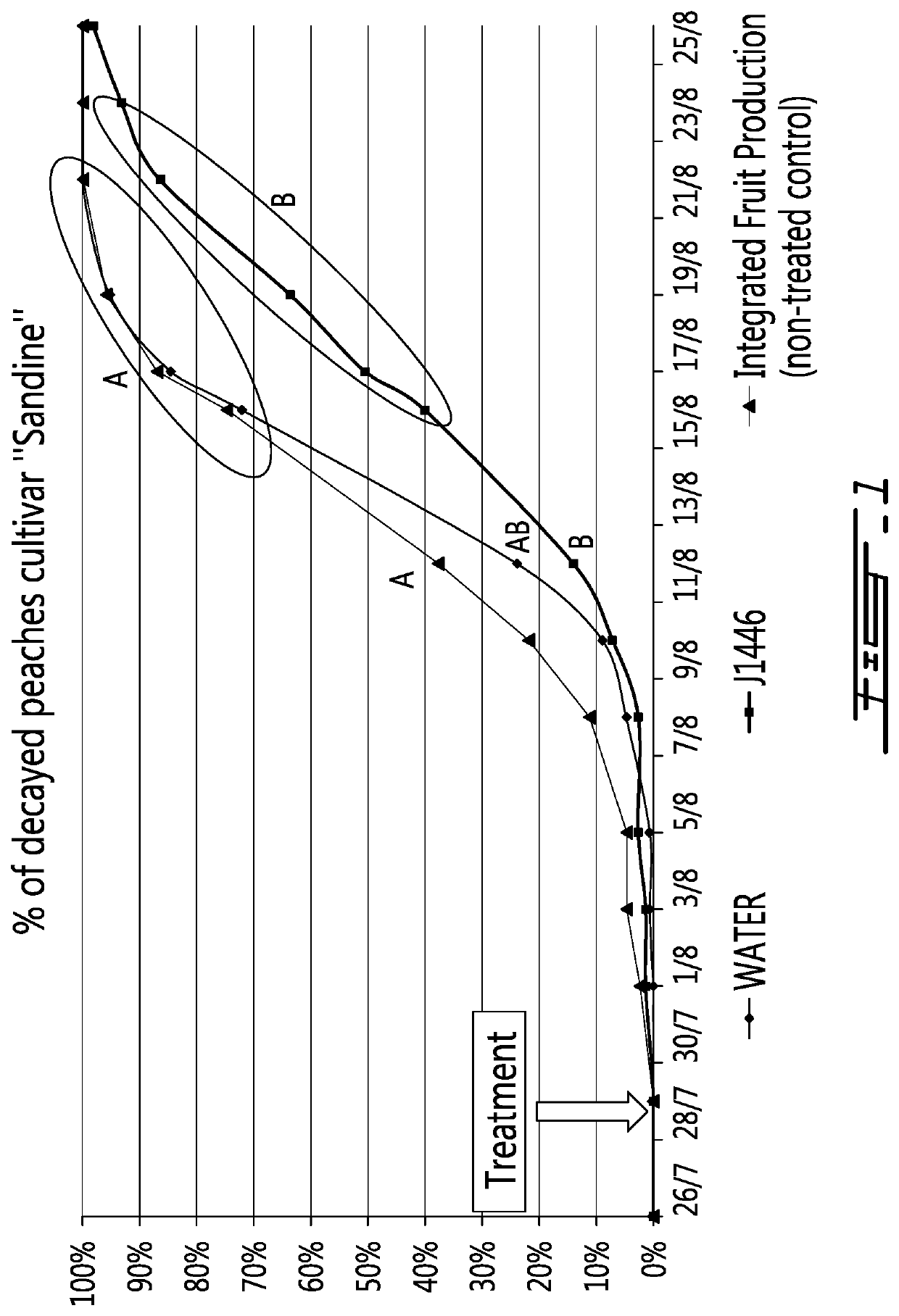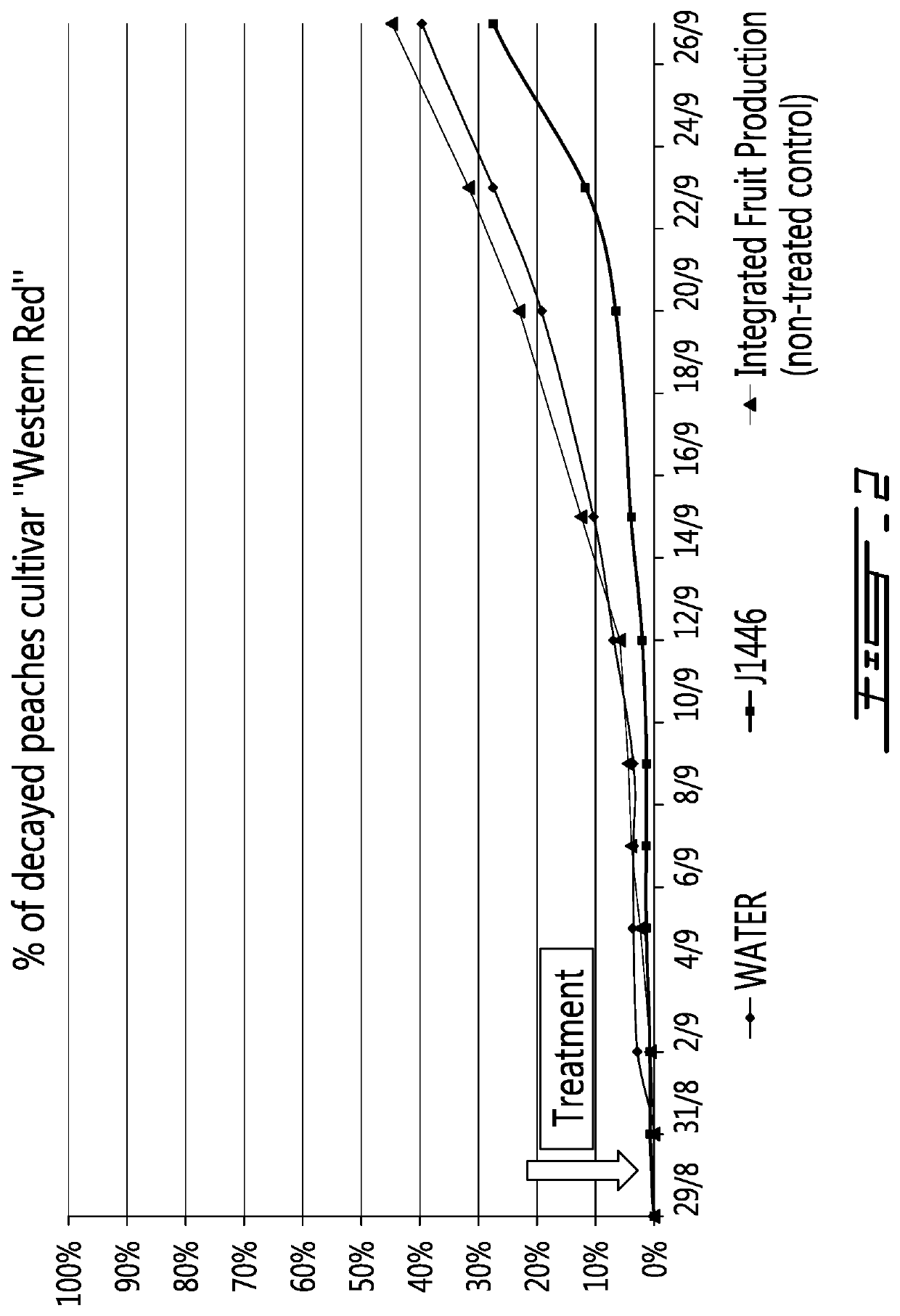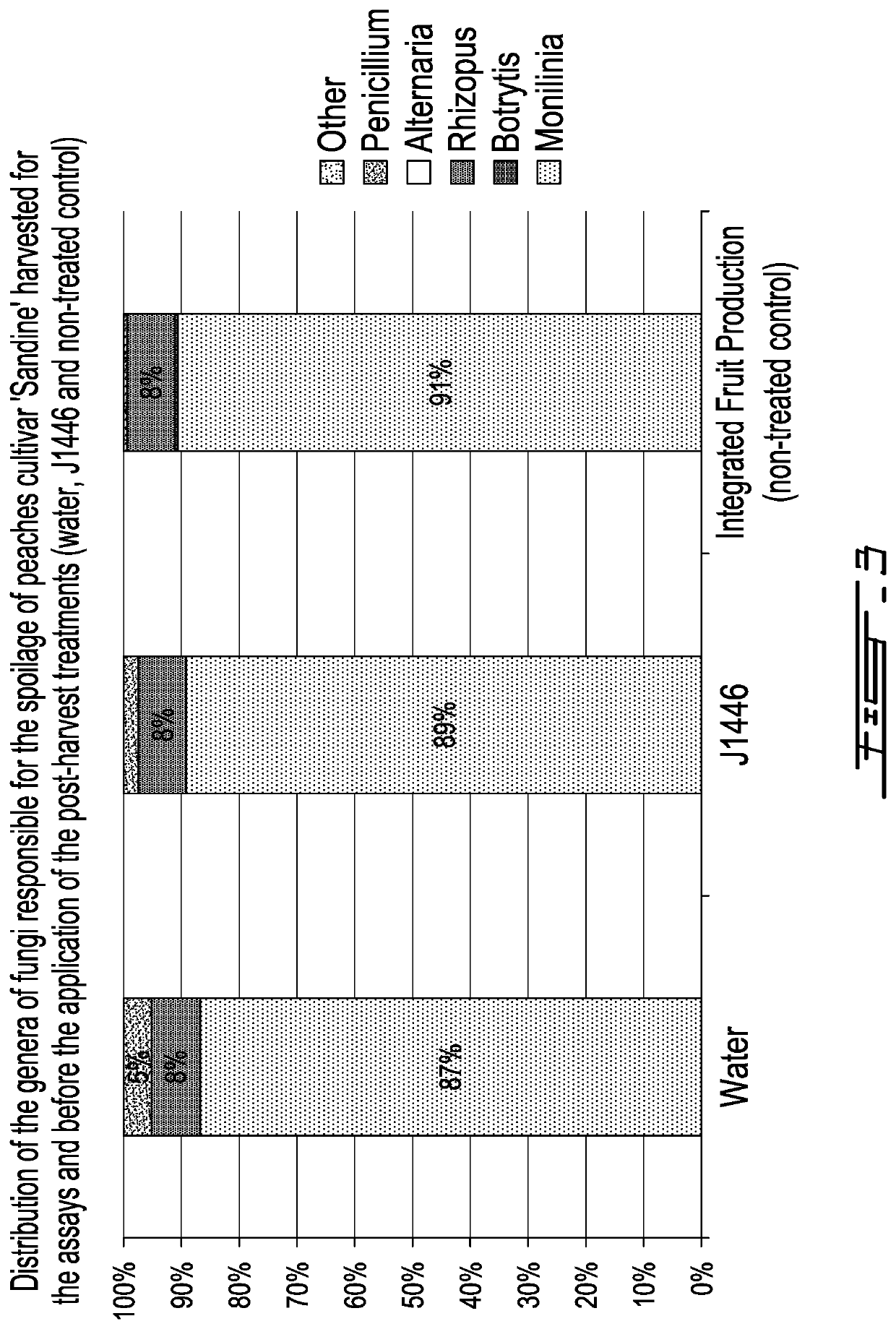Post-harvest treatment method using clonostachys rosea
a treatment method and technology of clonostachys rosea, applied in the field of postharvest treatment methods, can solve the problems of pathogens infecting, significant spoilage and decay of produce during storage, and major constraints on crop yield of plant pathogens, so as to prolong the shelf life of stored harvested produce after harvest, prevent or reduce postharvest decay, and reduce postharvest decay
- Summary
- Abstract
- Description
- Claims
- Application Information
AI Technical Summary
Benefits of technology
Problems solved by technology
Method used
Image
Examples
example 1
of C. Rosea F. Catenulata Against Post-Harvest Diseases on Peaches
[0035]The objective of this study was to evaluate the effect of C. rosea f. catenulata for the management of post-harvest diseases on peaches, for preventing post-harvest decay and for reducing post-harvest losses of harvested peaches.
[0036]Fruits:
[0037]Peaches (‘Sandine’ and ‘Western Red’) were picked at firm ripe stage from a commercial orchard (using Integrated Fruit Production (IFP)) and store at 4° C. for 2 days or less.
[0038]Antagonist / Biocontrol Agent:
[0039]PDA (potato dextrose agar) in Petri dishes was inoculated with spores of C. rosea f. catenulata J1446 by placing a droplet of spore suspension containing about 106 to 107 cfu / ml onto the medium in each dish and spreading the droplet over the agar surface with a cell spreader. The dispersed spores initiated numerous colonies which sporulated heavily at 25° C. and the spores were normally collected after 8 days.
[0040]Fruit Inoculation:
[0041]The peaches were di...
example 2
l Control of Post-Harvest Fungal Rots of Nectarines Using C. Rosea F. Catenulata
[0051]The aim of this study was to investigate the effect of various post-harvest treatment methods (two different formulations of the biocontrol agent, with or without refrigeration storage after the post-harvest treatment) on the post-harvest quality of nectarines during storage conditions.
[0052]Fruits:
[0053]Nectarines (Variety: Nectatop; Year of planting: 2011; Distance between plantings and density: 6×3 m, i.e. 556 trees / ha) were picked at firm ripe stage, measured, selected (same size, same level of maturity, lack of damage) and boxed up with 260 to 280 fruits per tray. They were stored at 2-4° C. for 2 to 3 days.
[0054]Post-Harvest Treatments:
[0055]The nectarines were disposed on trays (60 nectarines per tray). There were four replicates of 60 nectarines per treatment. Non-treated fruits (i.e. produced fruits via Integrated Fruit Production) and fruits treated with water were used as negative contr...
example 3
l Control of Post-Harvest Fungal Rots of Plums Using C. Rosea F. Catenulata
[0078]The aim of this study was to investigate the effect of various post-harvest treatment methods on the post-harvest quality of plums during storage conditions.
[0079]Fruits:
[0080]Plums (Variety: TC SUN; Year of planting: 2008; Distance between plantings and density: 4×1 m) were picked at firm ripe stage, measured, selected (same size, same level of maturity, lack of damage) and boxed. Monilinia spp. was found to be associated as the predominant fungus with the rotten fruits.
[0081]Post-Harvest Treatments:
[0082]The plums were disposed on trays (100 plums per tray). There were four replicates (trays) of 100 plums per method of treatment. Non-treated fruits (i.e. produced fruits via Integrated Fruit Production) were used as negative controls. The trays were stored at 0-0.5° C. for 48 hours.
[0083]Six different methods of treatment were tested and compared. They are defined in Table 3.
TABLE 3Description of the ...
PUM
 Login to View More
Login to View More Abstract
Description
Claims
Application Information
 Login to View More
Login to View More - R&D
- Intellectual Property
- Life Sciences
- Materials
- Tech Scout
- Unparalleled Data Quality
- Higher Quality Content
- 60% Fewer Hallucinations
Browse by: Latest US Patents, China's latest patents, Technical Efficacy Thesaurus, Application Domain, Technology Topic, Popular Technical Reports.
© 2025 PatSnap. All rights reserved.Legal|Privacy policy|Modern Slavery Act Transparency Statement|Sitemap|About US| Contact US: help@patsnap.com



